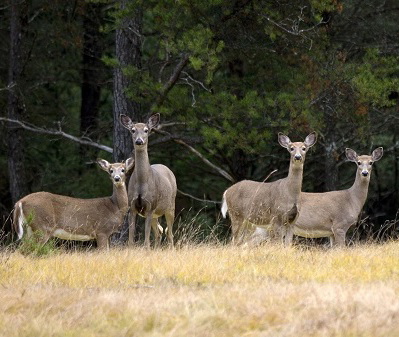Michigan DNR Battling CWD
By Glen Wunderlich
Unseasonably warm weather for much of Michigan’s regular firearms deer season has prompted hunters to spend more time afield. While it is too early to know how this season stacks up to those in the past, the DNR seems pleased with hunters’ cooperation in the effort to determine the extent of Chronic Wasting Disease (CWD) discovered earlier this year. Having taken two deer to the Rose Lake check station, I have been impressed with the eagerness of staff members to share information, as well as their preparedness for the arduous task of collecting data.
The health of our herd is vital and we, as stewards of our wildlife resources, should do what we can to facilitate the vast undertaking of controlling the dreaded disease – even if it means we are inconvenienced somewhat by the process. Now that the rush of opening day is behind us, it’s even easier to help with the study.
One of the services I find particularly helpful is deer aging. As a subscriber to Quality Deer Management principles, I am among those who want bucks grow to maturity. Unless a person has been properly trained, judging age can be somewhat tricky; an inspection of a deer’s teeth tells the story.
At the Rose Lake check station, are numerous samples of lower jaw bones displayed on boards providing comparisons between the ages. There still exists some room for opinion on the age of older deer, but part of the CWD testing includes a more accurate measurement of age by a laboratory.
The staff also checks antler development by measuring the diameter of antler main beams, as a means to compare relative deer health. Workers will also pinpoint where the deer was taken to help gather facts.
Although a deer had been suspected of contracting CWD in an area north of Lansing – well out of the core area where the disease was found initially – it has not been reported as having tested positive, as of this writing.
The most recent statistics reveal that 1,963 deer have been tested in the core area with the number of positive cases of CWD remaining at 3. For all other areas of the state, another 2,000 deer have been tested with 823 of them from the larger CWD management zone.
Muzzleloading season runs this coming Friday, December 4-13 in Zones 1 and 2 (Upper Peninsula and northern Lower Peninsula) and from December 4-20 in Zone 3 (southern Lower Peninsula).
It’s a great time to be in the woods, as the deer return to more natural, predictable movement patterns without so much hunting pressure. It’s also our final opportunity this hunting season to provide necessary documentation to our wildlife biologists in their quest to stop the spread of CWD.
Let’s keep up the good work.






